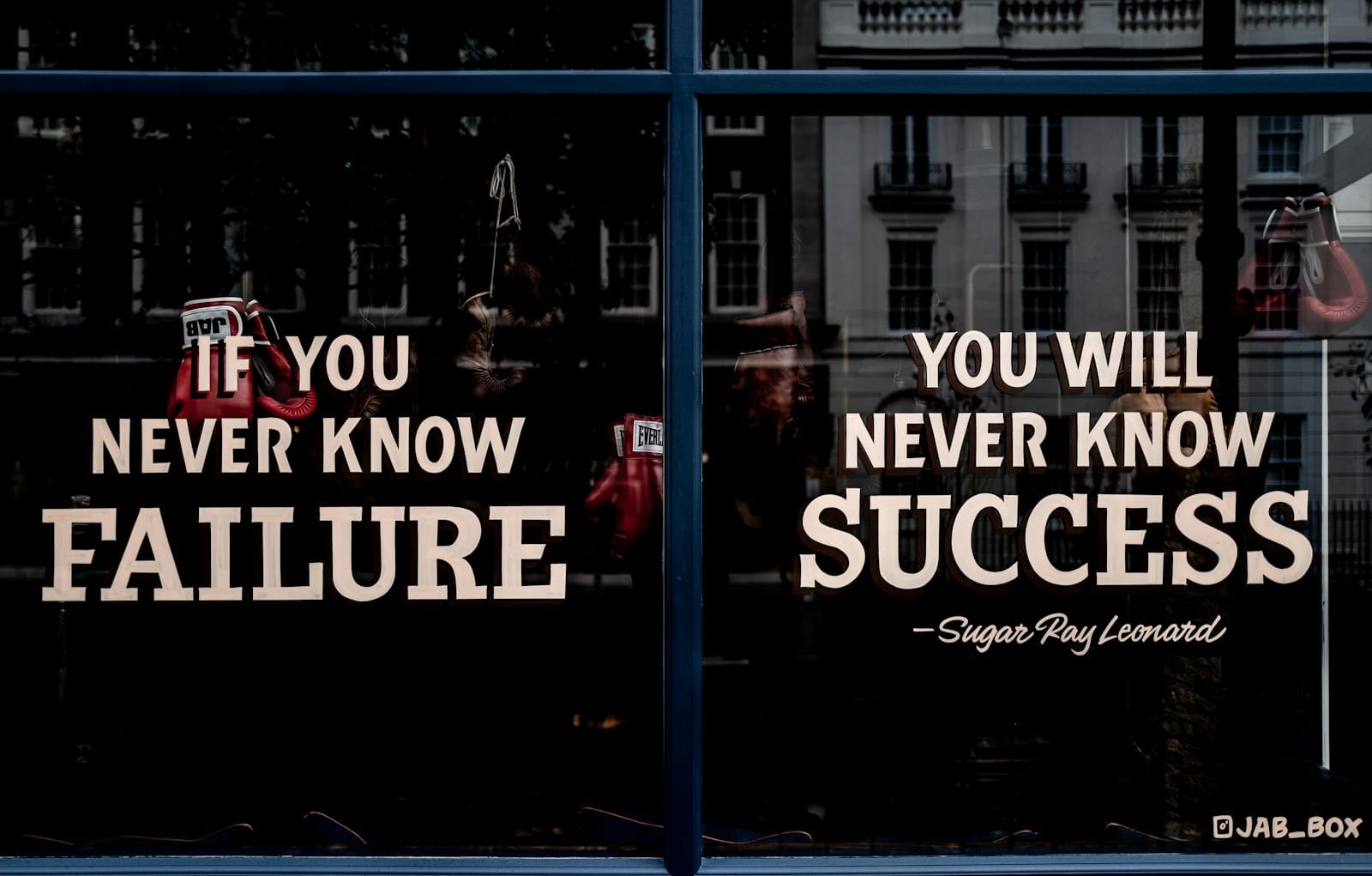The counterintuitive relationship between failures and breakthroughs
The silence in the client meeting was deafening. I had just presented what I thought was a brilliant digital strategy, but the client’s furrowed brow and uncomfortable shifting told me everything I needed to know before they even spoke. They hated it. My carefully crafted proposal had completely missed the mark.
As project manager at our digital agency, this wasn’t just a personal rejection – it affected my team, our timeline, and potentially our relationship with a significant client. Walking back to the office, I felt that familiar tightness in my chest that comes with professional failure. My confidence, which had been high walking into that meeting, now lay shattered at my feet.
What I didn’t realize then – but understand clearly now – is that this painful moment was actually laying the foundation for a much deeper, more resilient kind of confidence that could never have developed through success alone.
The relationship between failure and confidence is profoundly counterintuitive. We typically assume confidence comes from consistent success, yet the professionals with the most genuine, unshakable confidence are almost always those who have faced significant setbacks. This isn’t coincidence – it’s causation.
In both my agency role managing development teams and in building my own business ventures, I’ve discovered that failure isn’t just an inevitable step on the path to growth – it’s actually the engine that builds lasting confidence when approached correctly. The key distinction lies not in avoiding failure, but in developing a framework that transforms setbacks into the very foundation of professional resilience.
The confidence paradox: why we avoid what builds us
I once spent three weeks developing an intricate project management system for our agency. It incorporated everything I thought would revolutionize our workflow – custom fields, automated notifications, and integrated time tracking. I was certain it would transform our efficiency. When we implemented it, the system failed spectacularly. Team members couldn’t navigate it intuitively, clients were confused by the new reporting format, and ultimately, it created more problems than it solved.
My first reaction was embarrassment, followed quickly by a desire to hide the failure. I considered quietly reverting to our old system without drawing attention to my misstep. This instinct – to conceal and avoid failure – is precisely what prevents many of us from developing genuine confidence.
The confidence paradox exists because we intuitively avoid the very experiences that would build lasting self-assurance. Research consistently shows that confidence isn’t built through continuous success but through progressive challenge and recovery. Each time we face a setback and find a way forward, our belief in our ability to handle future difficulties strengthens.
In professional settings, this pattern manifests clearly. The team member who has only experienced success often crumbles at the first significant obstacle. Meanwhile, the colleague who has weathered numerous challenges approaches new problems with calm assurance, knowing from experience they can find solutions even when initially stumped.
This paradox extends beyond individual psychology into organizational culture. Agencies and companies that celebrate “failing forward” consistently outperform those with perfectionistic cultures. When failure is treated as valuable data rather than evidence of incompetence, innovation flourishes and collective confidence grows.
But simply experiencing failure isn’t enough. There’s a fundamental distinction between failures that crush confidence and those that build it.
The distinction between crushing and constructive failure
Not all failures build confidence – some genuinely undermine it. After years of managing both client projects and my own business initiatives, I’ve identified a crucial spectrum of failure experiences that determine whether a setback will strengthen or weaken you.
At one end lies what I call crushing failure – setbacks characterized by:
- Catastrophic consequences that threaten fundamental security
- Absence of control or agency in the outcome
- Lack of feedback or learning potential
- Reinforcement of negative self-beliefs
- Isolation during the experience and aftermath
At the agency, I witnessed this when a junior developer made a deployment error that temporarily took down a client’s e-commerce site during their biggest promotion of the year. The consequences were severe, the blame was concentrated, and the experience left lasting damage to their professional confidence.
At the other end is constructive failure – setbacks that become confidence engines:
- Contained consequences with meaningful but manageable stakes
- Significant personal agency in both the failure and recovery
- Rich feedback that illuminates specific improvement areas
- Challenge to limiting beliefs rather than reinforcement
- Supportive context that normalizes the failure experience
This type of failure occurred when we misjudged the timeline for a complex website migration. While disappointing, it became a transformative learning opportunity. We maintained client trust through transparency, identified specific process improvements, and emerged with greater collective confidence in our ability to handle complex projects.
The distinction isn’t just about the scale of failure – small failures can be crushing if they reinforce powerlessness, while seemingly major setbacks can be constructive when they occur within the right framework.
The critical insight is that we can actively shape where our failures fall on this spectrum. By adjusting how we structure projects, set expectations, and respond to setbacks, we can transform even significant failures into confidence-building experiences.
This understanding leads us to examine exactly how failure physiologically and psychologically builds confidence when properly structured.
The psychological mechanics of failure-driven confidence
When we experience constructive failure, a fascinating psychological process unfolds. Understanding this process allows us to leverage it intentionally rather than simply hoping failure eventually builds resilience.
The most immediate psychological effect occurs in what psychologists call our “comfort zone.” Each time we survive a setback, our neural pathways physically restructure to accommodate a new understanding of what we can handle. The boundary of perceived safety literally expands. This explains why the second time facing a particular challenge provokes less anxiety than the first – our brain has tangible evidence of survival.
In my entrepreneurial ventures, I noticed this when cold-calling potential clients. The first rejection was genuinely painful. But by the twentieth rejection, my physiological stress response had dramatically decreased. My brain had accumulated evidence that rejection wouldn’t destroy me.
This recalibration extends beyond specific scenarios into general self-concept. Psychologist Albert Bandura’s research on self-efficacy shows that performance accomplishments – especially those achieved through overcoming difficulties – are the most powerful source of confidence. Each recovery from failure provides concrete, undeniable evidence of our capabilities.
I’ve observed this transformation in team members who successfully navigate their first major client crisis. Something fundamental shifts in their professional self-image. They stop seeing themselves as people who “might be able to handle problems” and start identifying as people who “have handled problems before and will again.”
Importantly, failure also builds confidence through skill acquisition. When everything goes according to plan, we develop a narrow set of capabilities. When we encounter unexpected obstacles, we’re forced to develop creative problem-solving skills, emotional regulation, strategic communication, and other competencies that form the foundation of professional confidence.
This explains why professionals with failure experience often display remarkable calm during crises. It’s not just psychological resilience – they’ve literally developed more extensive skill sets through previous recoveries.
Recognizing these processes helps us approach failure strategically rather than simply enduring it. By understanding how setbacks physically and psychologically build confidence, we can create frameworks that maximize this growth potential.
Building a failure framework for enduring confidence
After experiencing numerous setbacks across both agency projects and personal ventures, I’ve developed a structured approach for transforming failures into confidence engines. This framework consistently converts what could be crushing experiences into constructive growth:
1. Immediate containment and perspective-taking
When failure occurs, our first instinct is often catastrophic thinking. After a recent project derailed, my immediate thought was “this will destroy our relationship with this client.” By consciously pausing to assess actual consequences rather than feared ones, I realized the situation was recoverable with prompt action.
The practice of containment involves:
- Identifying what specifically has failed (rarely is it “everything”)
- Distinguishing between actual and anticipated consequences
- Establishing what remains under your control despite the setback
- Placing the failure in broader professional context
2. Strategic vulnerability and responsibility mapping
Once the situation is contained, the next step involves communication that balances accountability with appropriate context. When our team missed a critical deadline, I found that transparent communication with the affected stakeholders actually increased their confidence in us rather than diminishing it.
This requires:
- Acknowledging the failure directly without defensive qualification
- Distinguishing between responsibility and blame
- Sharing relevant context without offering excuses
- Demonstrating your process for addressing the situation
3. Systematic extraction of failure data
Every failure contains invaluable information if properly examined. After a marketing campaign significantly underperformed, our team conducted a structured post-mortem that yielded insights that transformed our approach to subsequent campaigns.
Effective data extraction includes:
- Identifying proximate causes (what directly went wrong)
- Exploring contributing factors (what enabled the failure)
- Recognizing warning signals that were missed
- Documenting successful elements even amid overall failure
4. Identity integration and narrative development
Perhaps the most crucial element in building confidence through failure is integrating the experience into your professional identity. After my project management system failed, I consciously reshaped the narrative from “I created a failed system” to “I’m the kind of professional who experiments with solutions and learns rapidly from results.”
This process involves:
- Connecting the failure to your broader professional journey
- Identifying specific capabilities developed through the experience
- Recognizing how the setback challenges limiting self-beliefs
- Articulating the story of the failure in empowering terms
5. Strategic reengagement and application
Confidence ultimately grows through applying lessons from failure in subsequent work. After an unsuccessful content strategy for a client, I deliberately incorporated the insights into the next content plan, which significantly outperformed expectations.
Effective reengagement includes:
- Identifying a specific opportunity to apply lessons learned
- Consciously acknowledging the connection to the previous failure
- Building in safeguards based on past experience
- Celebrating the transformation of failure into improved performance
This framework isn’t just theoretical – it’s a practical approach I’ve applied repeatedly across different types of professional setbacks. Its effectiveness lies in transforming failure from something that happens to you into a resource you actively leverage for growth.
The most powerful aspect of this approach is how it compounds over time, creating exponential returns on confidence and capability.
The compounding returns of strategic failure
The most significant benefit of strategically processing failure emerges not immediately but through compounding returns over time. This compounding effect transforms not just outcomes but our entire experience of professional life.
The first layer of compounding occurs in risk tolerance. Each successfully navigated failure incrementally increases willingness to take calculated risks. I’ve watched this unfold in my own entrepreneurial ventures, where initial small failures in marketing approaches gave me the confidence to eventually risk larger investments in unproven channels that ultimately delivered breakthrough results.
This expanded risk tolerance creates access to opportunities that remain invisible to those who prioritize avoiding failure. The professionals who grow fastest are rarely those who fail least – they’re those who extract maximum learning from necessary failures while continuing to stretch beyond comfortable certainty.
The second compounding effect appears in recovery speed. What once might have derailed you for weeks gradually becomes something you can process and integrate in days, then hours. After managing dozens of project setbacks, I now find myself able to move from initial disappointment to constructive problem-solving in a fraction of the time it once required.
This accelerated recovery creates tremendous competitive advantage. While others remain paralyzed by setbacks, professionals with developed failure resilience quickly reorient and continue progressing.
Perhaps most importantly, strategic failure compounds into a profound shift in professional identity. Rather than seeing yourself as someone who succeeds or fails in binary terms, you begin recognizing yourself as someone who consistently converts challenges into growth. This identity shift fundamentally transforms your relationship with uncertainty from one of anxiety to one of curiosity.
I’ve found this perspective particularly valuable when leading teams through difficult periods. By modeling constructive responses to failure and explicitly acknowledging how setbacks contribute to growth, I’ve been able to cultivate team cultures where innovation flourishes because experimentation feels safe.
The ultimate compounding benefit is experiential. When you no longer fear failure as a defining judgment but engage with it as a growth mechanism, professional life becomes simultaneously more enjoyable and more successful. The confidence built through constructive failure allows you to be fully present in your work rather than constantly managing anxiety about potential setbacks.
This transformation doesn’t eliminate the initial sting of failure – that emotional response remains valuable feedback – but it fundamentally changes what failure means and how it functions in your professional journey.
Transforming your relationship with professional setbacks
Failure isn’t just something to endure on the path to success – it’s actually the mechanism that builds the confidence necessary for meaningful achievement. The professionals who advance most significantly aren’t those with unbroken success records but those who develop frameworks for converting inevitable setbacks into foundations for growth.
I’ve witnessed this repeatedly in both managing agency teams and developing my own business ventures. The team members who emerge as leaders are invariably those who have faced significant challenges and learned to leverage them rather than those who have been sheltered from difficulty.
This perspective transforms how we approach risk, innovation, and professional development. Instead of structuring our work to minimize failure at all costs, we can intentionally create conditions where failure becomes a productive, confidence-building force.
The next time you face a professional setback – whether a rejected proposal, a failed initiative, or a missed opportunity – try applying the framework I’ve outlined. Ask yourself: How can I contain this experience? What specific data does it offer? How does navigating this challenge expand my professional identity?
By approaching failure as a resource rather than an obstacle, you’ll gradually build a type of confidence that couldn’t exist without setbacks – the unshakable assurance that comes from knowing you can face professional challenges, extract their value, and convert them into forward momentum.
This isn’t just a more effective approach to professional development – it’s a more fulfilling way to experience the inevitable ups and downs of meaningful work.







